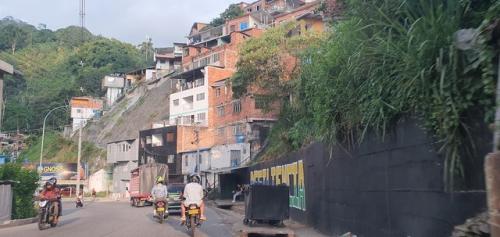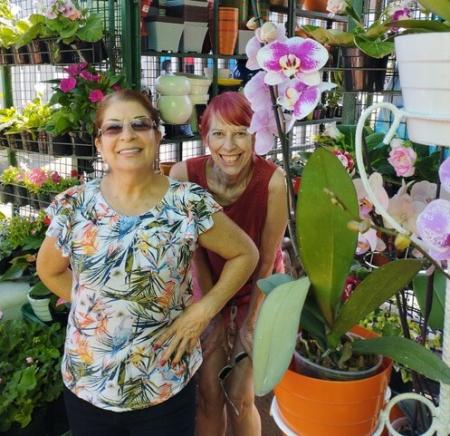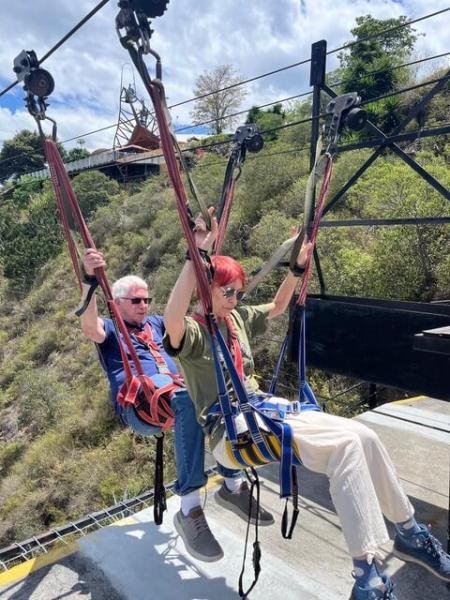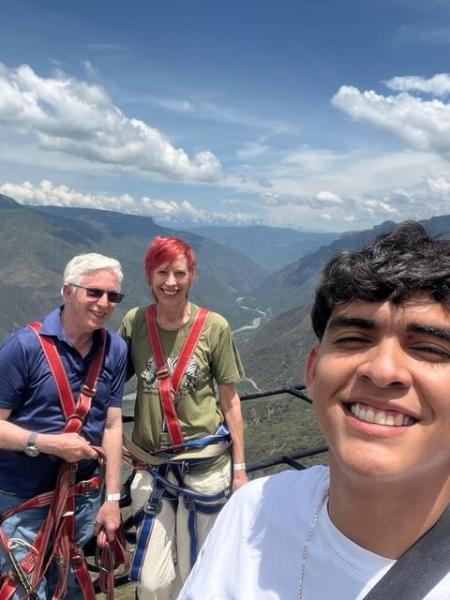 On my third day of a total immersion language holiday, I suddenly feel rebellious.
On my third day of a total immersion language holiday, I suddenly feel rebellious.
I’ve paid good money to spend a week in Colombia improving my Spanish, yet I’m craving to hear some English before my head explodes. But no, it’s 100% Spanish from the time I eat breakfast with my host family to the moment I head for bed, my brain fizzing with new words and baffling subjunctive sentences.
I quietly whisper a few comments in English to one of my three fellow students, then settle back to my studies.
If you’ve ever thought about taking a language immersion holiday, I can thoroughly recommend it. I had a fabulous time in Colombia, although I can’t honestly say that my Spanish progressed immensely. My fault entirely, since I’ve failed to become fluent during three years of living in Chile, and an extra week was hardly likely to be the miracle cure. So pick your destination carefully, to make sure you enjoy a great holiday as well as the mental challenge.
 My course with Spanishlandschool.com was based in Bucaramanga, a small city in the Andes that’s billed as one of the safest and greenest in the country. A few things make Colombia a good choice. The Spanish is pretty pure and clear, the people are warm, the weather is hot, and the cost of living is low.
My course with Spanishlandschool.com was based in Bucaramanga, a small city in the Andes that’s billed as one of the safest and greenest in the country. A few things make Colombia a good choice. The Spanish is pretty pure and clear, the people are warm, the weather is hot, and the cost of living is low.
My course ran from Saturday to Saturday, but midweek flights are so much cheaper that I arrived early and paid for three nights in a hotel first. When Saturday rolled around, one of the Spanishland staff picked me up at my hotel and drove me to meet my host family, Yolanda and Hector Galvis Antolinez and their son Yeison.
 It felt weird moving into someone else’s home, but they made me extremely welcome and Yolanda instantly fed me a late lunch before showing me their neighbourhood. Yolanda gave me a running commentary as we strolled around, and at times the wave of words washed over me when I forgot to concentrate on listening.
It felt weird moving into someone else’s home, but they made me extremely welcome and Yolanda instantly fed me a late lunch before showing me their neighbourhood. Yolanda gave me a running commentary as we strolled around, and at times the wave of words washed over me when I forgot to concentrate on listening.
As she prepared dinner that evening I fancied a glass of wine, and started Googling the nearest supermarket. Colombia isn’t a wine-drinking nation, and my hosts were teetotal, but Yolanda dug out a neglected bottle of Cabernet from a cupboard and poured some into a tiny sherry glass. It was terrible, and we laughed as we poured it down the sink with her confessing it had been open for at least two years. An unopened bottle appeared, and I poured a glass. Two hours later Yolanda looked at me askance when I went for a refill. When we dropped in to visit her brother in a neighbouring street one evening, my Spanish was good enough to understand Yolanda describing her guest with the casual comment that I drank a lot! Cultural differences, that’s all.
Sunday was an early start for a day trip to Panachi – an abbreviation for Parque en el Cañón del Chicamocha. This is the second-largest canyon in the world after the Grand Canyon, with 141 miles of valley carved out by a river.
 My companion for the day was David, a 78-year-old US man who wants to improve his Spanish because he’s retired to Panama. Our guide Saul Aguilar took us on the impressive cable car that runs down one side of the canyon and up the other. Then he guided us around the museum, showed us a massive sculpture celebrating the fight for independence from the Spanish rulers, and took us to a coffee farm on the ride back home.
My companion for the day was David, a 78-year-old US man who wants to improve his Spanish because he’s retired to Panama. Our guide Saul Aguilar took us on the impressive cable car that runs down one side of the canyon and up the other. Then he guided us around the museum, showed us a massive sculpture celebrating the fight for independence from the Spanish rulers, and took us to a coffee farm on the ride back home.
Spanishland runs courses throughout the year for intermediate or advanced speakers. Since it’s quite pricy at $2,397 a week, most students tend to be older, with the time and money to invest in themselves. One student in his 90s has been back three times, and Saul told me he’s witnessed his progress from very slow to almost fluent.
The company itself is fascinating. It began with Colombian-native Andrea and her US husband Nate Alger recording free tutorials for YouTube. Then they introduced paid-for private lessons, and launched the total immersion courses a couple of years ago. It’s a real family affair, with aunts, uncles, cousins, brothers and sisters working as the host families, drivers, guides and organisers.
During my week I had lessons with two different teachers, shared with just one other student for maximum attention. Three hours a day sounds intense, but the lessons went surprisingly quickly. Then we were out and about, visiting museums, a coffee plantation, and a gem of an old colonial town called Giron. All the meals, refreshments, transport and entrance tickets are included in the course fee, so you can travel without worrying about expenses.
 The only thing to worry about is making the most of the opportunity, and not letting your brain rebel against something so useful. Perhaps I could have asked for more corrections, made better notes in the exercise book I was given, and studied the workbook harder. I could have concentrated more on what the guides and my hosts were saying, too, instead of sometimes forgetting to listen.
The only thing to worry about is making the most of the opportunity, and not letting your brain rebel against something so useful. Perhaps I could have asked for more corrections, made better notes in the exercise book I was given, and studied the workbook harder. I could have concentrated more on what the guides and my hosts were saying, too, instead of sometimes forgetting to listen.
Occasionally I felt my Spanish was going backwards, once I realised how many mistakes I made and how much I still didn’t know. At other times you’re lulled into a false sense of progress if you understand everything the guides or teachers say. Then they talk casually amongst themselves, and you remember that they’ve been speaking more slowly and clearly for your benefit.
I generally understood 80% of the conversations if I focused, with facial expressions and mime filling in the rest. Besides, it’s only important to understand every word if you’re doing something heroic like ziplining. I made sure I paid full attention then.
In the classes we learned new phrases and constructions, but will I remember and actually use them? That demands a serious effort, and we’ve already established that I’m lazy.
Saturday rolled around too quickly, and the day began with a hike up hill for breakfast with a view over the city. Then David and I did the final activity of a salsa lesson with Mariana, a cousin in the extended family. The salsa class was basic since we were complete beginners, but Mariana’s excellent moves showed us how good we could be if we practiced for another few years. Just like my Spanish, really.
Tips for choosing a language immersion holiday:
Pick your level – You want to learn, but you also want to understand what’s being said, so be honest about your linguistic abilities.
Pick the right country and city – good courses include plenty of activities, so choose a place you’re eager to see.
Size matters – look for a course where the classes are intimate. You won’t get much attention in a class with 15 others.
Age range – some courses are designed for certain age groups – useful if you don’t want to team up with older people like me!
Take your time - a week was far too short. I should have done two. Some companies will let you book for a whole year!
Accommodation – staying with a host family really intensifies the experience, while others offer the option of hotel or hostel stays, giving you some language downtime.